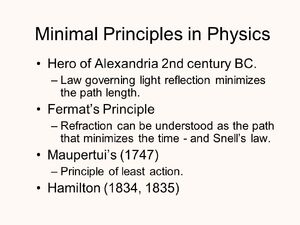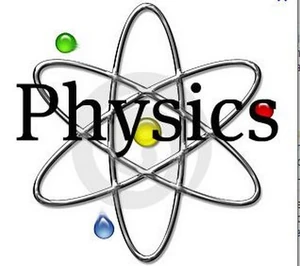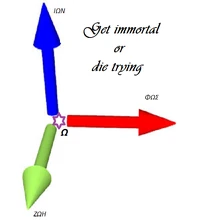Αρχή Hamilton

The variational derivative of
the action for a system is zero
When a particle of fixed energy travels
from point A to point B,
its trajectory is such that
the corresponding action has
the minimum possible value.




Αρχή Ελάχιστης Δράσης
Αρχή Hamilton







Επιστημονικοί Νόμοι
Μαθηματικό Θεώρημα
Νόμοι Μαθηματικών
Φυσικός Νόμος
Νόμοι Φυσικής
Νόμοι Χημείας
Νόμοι Γεωλογίας
Νόμοι Βιολογίας
Νόμοι Οικονομίας

Φυσικοί Γης
Νόμοι Φυσικής
Νόμοι Φυσικής
Θεωρίες Φυσικής
Πειράματα Φυσικής
Παράδοξα Φυσικής
Προβλήματα Φυσικής

- Ένας Φυσικός Νόμος
Ετυμολογία[]
Η ονομασία "Αρχή Hamilton" σχετίζεται ετυμολογικά με το όνομα "Hamilton".
Εισαγωγή[]
In physics, Hamilton's principle is William Rowan Hamilton's formulation of the principle of stationary action.
It states that the dynamics of a physical system is determined by a variational problem for a functional based on a single function, the Lagrangian, which contains all physical information concerning the system and the forces acting on it.
The variational problem is equivalent to and allows for the derivation of the differential equations of motion of the physical system.
Although formulated originally for classical mechanics, Hamilton's principle also applies to classical fields such as the electromagnetic and gravitational fields, and has even been extended to quantum mechanics, quantum field theory and criticality theories.
Mathematical formulation[]
Hamilton's principle states that the true evolution of a system described by generalized coordinates between two specified states and at two specified times and is a stationary point (a point where the variation is zero), of the action functional
where is the Lagrangian function for the system. In other words, any first-order perturbation of the true evolution results in (at most) second-order changes in . The action is a functional, i.e., something that takes as its input a function and returns a single number, a scalar. In terms of functional analysis, Hamilton's principle states that the true evolution of a physical system is a solution of the functional equation
Euler-Lagrange equations for the action integral[]
Requiring that the true trajectory be a stationary point of the action functional is equivalent to a set of differential equations for (the Εξισώσεις Euler-Lagrange), which may be derived as follows.
Let represent the true evolution of the system between two specified states and at two specified times and , and let be a small perturbation that is zero at the endpoints of the trajectory
To first order in the perturbation , the change in the action functional would be
where we have expanded the Lagrangian L to first order in the perturbation .
Applying integration by parts to the last term results
και λαμβάνοντας υπ'όψη ότι οι boundary conditions causes the first term to vanish, οδηγούμαστε στην εξίσωση:
Hamilton's principle requires that this first-order change is zero for all possible perturbations , i.e., the true path is a stationary point of the action functional (either a minimum, maximum or saddle point). This requirement can be satisfied if and only if
- Euler-Lagrange equations
These equations are called the Euler-Lagrange equations for the variational problem.
The conjugate momentum for a generalized coordinate is defined by the equation .
An important special case of these equations occurs when L does not contain a generalized coordinate explicitly, i.e.,
- if , the conjugate momentum is constant.
In such cases, the coordinate is called a cyclic coordinate. For example, if we use polar coordinates t, r, θ to describe the planar motion of a particle, and if L does not depend on θ, the conjugate momentum is the conserved angular momentum.
Example: Free particle in polar coordinates[]
Trivial examples help to appreciate the use of the action principle via the Euler-Lagrangian equations. A free particle (mass m and velocity v) in Euclidean space moves in a straight line. Using the Euler-Lagrange equations, this can be shown in polar coordinates as follows.
In the absence of a potential, the Lagrangian is simply equal to the kinetic energy
in orthonormal (x,y) coordinates, where the dot represents differentiation with respect to the curve parameter (usually the time, t). Therefore, upon application of the Euler-Lagrange equations,
And likewise for y. Thus the Euler-Lagrange formulation can be used to derive Newton's laws.
In polar coordinates (r, φ) the kinetic energy and hence the Lagrangian becomes
The radial r and φ components of the Euler-Lagrangian equations become, respectively
The solution of these two equations is given by
for a set of constants a, b, c, d determined by initial conditions. Thus, indeed, the solution is a straight line given in polar coordinates: a is the velocity, c is the distance of the closest approach to the origin, and d is the angle of motion.
Comparison with Maupertuis' principle[]
Hamilton's principle and Maupertuis' principle are occasionally confused and both have been called (incorrectly) the principle of least action.
They differ in three important ways:
1) their definition of the action...
- Maupertuis' principle uses an integral over the generalized coordinates known as the abbreviated action where are the conjugate momenta defined above.
- By contrast, Hamilton's principle uses , the integral of the Lagrangian over time.
2) the solution that they determine...
- Hamilton's principle determines the trajectory as a function of time, whereas Maupertuis' principle determines only the shape of the trajectory in the generalized coordinates.
- For example, Maupertuis' principle determines the shape of the ellipse on which a particle moves under the influence of an inverse-square central force such as gravity, but does not describe per se how the particle moves along that trajectory.
- (However, this time parameterization may be determined from the trajectory itself in subsequent calculations using the conservation of energy.)
- By contrast, Hamilton's principle directly specifies the motion along the ellipse as a function of time.
3) ...and the constraints on the variation.
- Maupertuis' principle requires that the two endpoint states and be given and that energy be conserved along every trajectory.
- By contrast, Hamilton's principle does not require the conservation of energy, but does require that the endpoint times and be specified as well as the endpoint states and .
Action principle for classical fields[]
The action principle can be extended to obtain the equations of motion for fields, such as the electromagnetic field or gravity.
The Einstein equation utilizes the Einstein-Hilbert action as constrained by a variational principle.
The path of a body in a gravitational field (i.e. free fall in space time, a so called geodesic) can be found using the action principle.
Hamilton's principle applied to deformable bodies[]
Hamilton's principle is an important variational principle in elastodynamics. As opposed to a system composed of rigid bodies, deformable bodies have an infinite number of degrees of freedom and occupy continuous regions of space; consequently, the state of the system is described by using continuous functions of space and time. The extended Hamilton Principle for such bodies is given by
where is the kinetic energy, is the elastic energy, is the work done by external loads on the body, and the initial and final times. If the system is conservative, the work done by external forces may be derived from a scalar potential . In this case,
This is called Hamilton's principle and it is invariant under coordinate transformations.
Action principle in quantum mechanics and quantum field theory[]
In quantum mechanics, the system does not follow a single path whose action is stationary, but the behavior of the system depends on all imaginable paths and the value of their action. The action corresponding to the various paths is used to calculate the path integral, that gives the probability amplitudes of the various outcomes.
Although equivalent in classical mechanics with Newton's laws, the action principle is better suited for generalizations and plays an important role in modern physics. Indeed, this principle is one of the great generalizations in physical science. In particular, it is fully appreciated and best understood within quantum mechanics. Richard Feynman's path integral formulation of quantum mechanics is based on a stationary-action principle, using path integrals. Maxwell's equations can be derived as conditions of stationary action.
Υποσημειώσεις[]
Εσωτερική Αρθρογραφία[]
Βιβλιογραφία[]
- W.R. Hamilton, "On a General Method in Dynamics.", Philosophical Transaction of the Royal Society
- Goldstein H. (1980) Classical Mechanics, 2nd ed., Addison Wesley, pp. 35–69.
- Landau LD and Lifshitz EM (1976) Mechanics, 3rd. ed., Pergamon Press. ISBN 0-08-021022-8 (hardcover) and ISBN 0-08-029141-4 (softcover), pp. 2–4.
- Arnold VI. (1989) Mathematical Methods of Classical Mechanics, 2nd ed., Springer Verlag, pp. 59–61.
Ιστογραφία[]
- Ομώνυμο άρθρο στην Βικιπαίδεια
- Ομώνυμο άρθρο στην Livepedia
- Part I (1834) p.247-308;
- Part II (1835) p. 95-144. (From the collection
- Sir William Rowan Hamilton (1805-1865): Mathematical Papers edited by David R. Wilkins, School of Mathematics, Trinity College, Dublin 2, Ireland. (2000); also reviewed as
- On a General Method in Dynamics)
- Richard Feynman: Η Αρχή της Ελάχιστης Δράσης, physicsgg.me
- Deriving the Euler-Lagrange Equation From the Principle of Least Action, medium.com
- Αρχή Ελάχιστης Δράσης
- Fundamental law of physics demonstrated using quantum objects, newscientist.com
|
Αν και θα βρείτε εξακριβωμένες πληροφορίες "Οι πληροφορίες αυτές μπορεί πρόσφατα Πρέπει να λάβετε υπ' όψη ότι Επίσης, |
- Μην κάνετε χρήση του περιεχομένου της παρούσας εγκυκλοπαίδειας
αν διαφωνείτε με όσα αναγράφονται σε αυτήν
- Όχι, στις διαφημίσεις που περιέχουν απαράδεκτο περιεχόμενο (άσεμνες εικόνες, ροζ αγγελίες κλπ.)







![{\displaystyle {\mathcal {S}}[\mathbf {q} ]\ {\stackrel {\mathrm {def} }{=}}\ \int _{t_{1}}^{t_{2}}L(\mathbf {q} (t),{\dot {\mathbf {q} }}(t),t)\,dt}](https://services.fandom.com/mathoid-facade/v1/media/math/render/svg/11182327dead12aa3a4da9e8b64a44c07aa21908)






![{\displaystyle \delta {\mathcal {S}}=\int _{t_{1}}^{t_{2}}\;\left[L(\mathbf {q} +{\boldsymbol {\varepsilon }},{\dot {\mathbf {q} }}+{\dot {{\boldsymbol {\varepsilon }})}}-L(\mathbf {q} ,{\dot {\mathbf {q} }})\right]dt}](https://services.fandom.com/mathoid-facade/v1/media/math/render/svg/97ba174b5a4df13b776b3faf9479a5f9c6ec9709)

![{\displaystyle \delta {\mathcal {S}}=\left[{\boldsymbol {\varepsilon }}\cdot {\frac {\partial L}{\partial {\dot {\mathbf {q} }}}}\right]_{t_{1}}^{t_{2}}+\int _{t_{1}}^{t_{2}}\;\left({\boldsymbol {\varepsilon }}\cdot {\frac {\partial L}{\partial \mathbf {q} }}-{\boldsymbol {\varepsilon }}\cdot {\frac {d}{dt}}{\frac {\partial L}{\partial {\dot {\mathbf {q} }}}}\right)\,dt}](https://services.fandom.com/mathoid-facade/v1/media/math/render/svg/2a3c9c1a7511641c6ed4e6145dd76fd8aaed0e21)


















![{\displaystyle \int _{t1}^{t2}\left[\delta W_{e}+\delta T-\delta U\right]dt=0}](https://services.fandom.com/mathoid-facade/v1/media/math/render/svg/8b78eacb0916c7e8633569556d99c6598edac462)





![{\displaystyle \delta \int _{t1}^{t2}\left[T-(U+V)\right]dt=0.}](https://services.fandom.com/mathoid-facade/v1/media/math/render/svg/57cc76da3223d567b4ac8ad5e9df8389acef3d3c)
